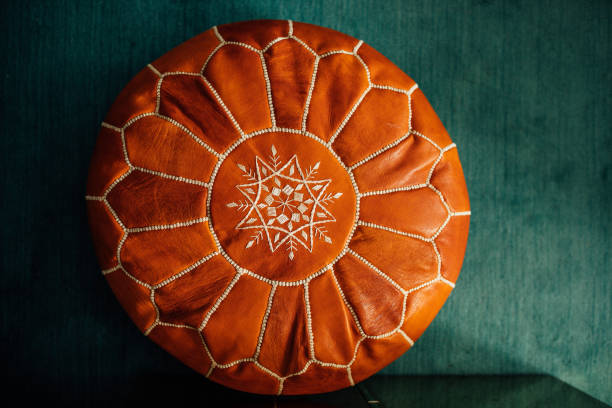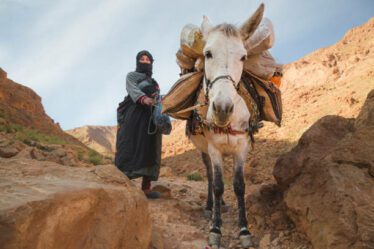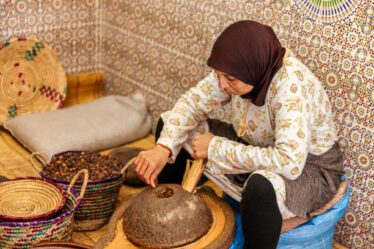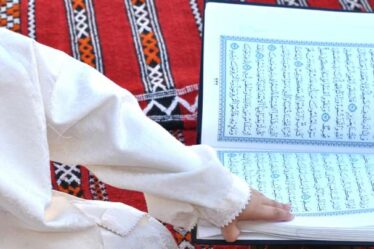
Leatherworking is one of the oldest and most renowned forms of Moroccan craftsmanship. This know-how, which has spanned the centuries, is an integral part of Morocco’s culture and economy. Inthe medinas of major cities such as Fez, Marrakech and Meknes, the art of leatherworking is still practiced in the traditional way, with techniques that have remained virtually unchanged for centuries.
The manufacturing process begins in tanneries, where animal hides, mainly from sheep, goats, cows and sometimes camels, are transformed into leather. The tanneries of Fez, in particular, are famous for their traditional tanning method, which uses natural substances such as tree bark and henna. This artisanal process guarantees the exceptional quality of Moroccan leather, renowned for its suppleness and durability.
Once the leather has been tanned and dyed, it is used to make a wide variety of handcrafted products, such as babouches (traditional slippers), bags, belts, wallets and even furniture. Each product is unique and made entirely by hand by experienced craftsmen. Moroccan babouches are particularly popular, both for their comfort and their style. They come in a multitude of colors and patterns, reflecting the aesthetic taste of Moroccan craftsmanship.
Moroccan leather goods are also renowned for their meticulous finishing. Craftsmen use simple tools to cut, sew and assemble leather pieces with great precision. The decorative motifs engraved or printed on the leather are often inspired by Moroccan culture, with geometric or floral motifs.
The leather industry plays an important economic role in Morocco. As well as providing thousands of jobs, particularly in the medinas, it is also a major source of exports. Moroccan leather products are highly prized internationally, particularly in Europe and the United States. The “Made in Morocco” label is a guarantee of quality that is attracting more and more consumers in search of authentic handcrafted products.
However, the leather sector faces a number of challenges. Craftsmen have to reconcile their traditional know-how with the demands of an increasingly globalized market. What’s more, working conditions in some tanneries are often difficult, with working methods that can be hard on craftsmen. In response to these challenges, several initiatives have been launched, both by the Moroccan government and by non-governmental organizations, to improve working conditions and modernize certain infrastructures while preserving traditional techniques.
Leatherworking in Morocco is an ancestral art that combines tradition and quality. This craft continues to play a central role in Moroccan culture and economy, while adapting to contemporary needs.


